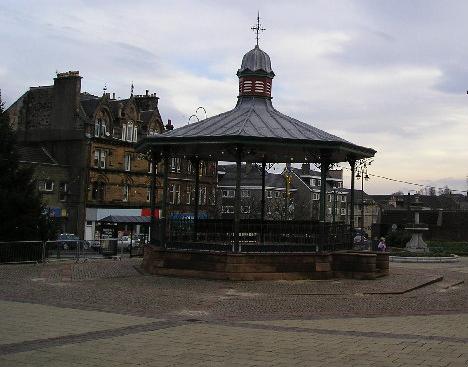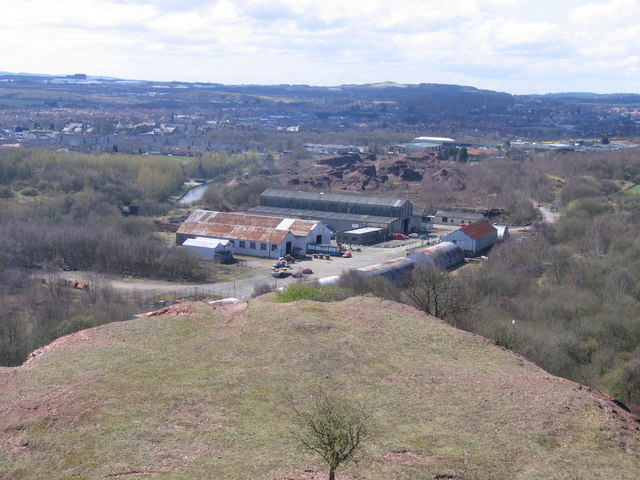|
Old Logie Green
Old Logie Green was a football ground in the Bonnington area of Edinburgh, Scotland. It was the home ground of Leith Athletic and St Bernard's between 1904 and 1926, both having previously played at the neighbouring New Logie Green ground. History The ground was originally known as Powderhall, and was renamed the Heriot Cricket and Football Ground before becoming Old Logie Green. It was located directly to the south-east of the Powderhall Grounds, which later became New Powderhall, and to the north-east of New Logie Green. Leith Athletic moved to the ground from Chancelot Park in 1904, Historical Kits and played their first league game there on 27 August 1904, a 3–1 win over [...More Info...] [...Related Items...] OR: [Wikipedia] [Google] [Baidu] |
Edinburgh
Edinburgh ( ; gd, Dùn Èideann ) is the capital city of Scotland and one of its 32 Council areas of Scotland, council areas. Historically part of the county of Midlothian (interchangeably Edinburghshire before 1921), it is located in Lothian on the southern shore of the Firth of Forth. Edinburgh is Scotland's List of towns and cities in Scotland by population, second-most populous city, after Glasgow, and the List of cities in the United Kingdom, seventh-most populous city in the United Kingdom. Recognised as the capital of Scotland since at least the 15th century, Edinburgh is the seat of the Scottish Government, the Scottish Parliament and the Courts of Scotland, highest courts in Scotland. The city's Holyrood Palace, Palace of Holyroodhouse is the official residence of the Monarchy of the United Kingdom, British monarchy in Scotland. The city has long been a centre of education, particularly in the fields of medicine, Scots law, Scottish law, literature, philosophy, the sc ... [...More Info...] [...Related Items...] OR: [Wikipedia] [Google] [Baidu] |
World War I
World War I (28 July 1914 11 November 1918), often abbreviated as WWI, was one of the deadliest global conflicts in history. Belligerents included much of Europe, the Russian Empire, the United States, and the Ottoman Empire, with fighting occurring throughout Europe, the Middle East, Africa, the Pacific, and parts of Asia. An estimated 9 million soldiers were killed in combat, plus another 23 million wounded, while 5 million civilians died as a result of military action, hunger, and disease. Millions more died in genocides within the Ottoman Empire and in the 1918 influenza pandemic, which was exacerbated by the movement of combatants during the war. Prior to 1914, the European great powers were divided between the Triple Entente (comprising France, Russia, and Britain) and the Triple Alliance (containing Germany, Austria-Hungary, and Italy). Tensions in the Balkans came to a head on 28 June 1914, following the assassination of Archduke Franz Ferdin ... [...More Info...] [...Related Items...] OR: [Wikipedia] [Google] [Baidu] |
Defunct Football Venues In Scotland
{{Disambiguation ...
Defunct (no longer in use or active) may refer to: * ''Defunct'' (video game), 2014 * Zombie process or defunct process, in Unix-like operating systems See also * * :Former entities * End-of-life product * Obsolescence Obsolescence is the state of being which occurs when an object, service, or practice is no longer maintained or required even though it may still be in good working order. It usually happens when something that is more efficient or less risky r ... [...More Info...] [...Related Items...] OR: [Wikipedia] [Google] [Baidu] |
Greyhound Racing
Greyhound racing is an organized, competitive sport in which greyhounds are raced around a track. There are two forms of greyhound racing, track racing (normally around an oval track) and coursing; the latter is now banned in most countries. Track racing uses an artificial lure (usually a form of windsock) that travels ahead of the greyhounds on a rail until the greyhounds cross the finish line. As with horse racing, greyhound races often allow the public to bet on the outcome. In many countries, greyhound racing is purely amateur and solely for enjoyment. In other countries, particularly Australia, Ireland, the United Kingdom, and the United States, greyhound racing is similar to horse racing in that it is part of the gambling industry. Animal rights and animal welfare groups have been critical of the welfare of greyhounds in the commercial racing industry for many years which has contributed to the reforms of the industries in recent years. A greyhound adoption movement spe ... [...More Info...] [...Related Items...] OR: [Wikipedia] [Google] [Baidu] |
Johnstone F
Johnstone ( sco, Johnstoun, gd, Baile Iain) is a town in the of and larger historic county of the same name, in the west of |
Clackmannan F
Clackmannan ( ; gd, Clach Mhanainn, perhaps meaning "Stone of Manau"), is a small town and civil parish set in the Central Lowlands of Scotland. Situated within the Forth Valley, Clackmannan is south-east of Alloa and south of Tillicoultry. The town is within the county of Clackmannanshire, of which it was formerly the county town, until Alloa overtook it in size and importance. History and toponymy Name and toponymy The name ''Clackmannan'' may be of Brittonic origin. The first element is probably ''*clog'', meaning "rock, crag, cliff" (c.f. Welsh ''clog''), and the second is the personal name ''Manau'', from the root ''man-'' meaning "projecting''. The name of the town has been said to allude to the Stone of Manau or Stone of Mannan, a pagan monument that can be seen in the town square beside the Tolbooth or Tollbooth Tower, which dates from 1592. History The early growth of the town was due in large part to the port which lay on the banks of the tidal stretch of the ... [...More Info...] [...Related Items...] OR: [Wikipedia] [Google] [Baidu] |
1924–25 Scottish Football League ...
Statistics of the Scottish Football League in season 1924–25. Scottish League Division One Scottish League Division Two Scottish League Division Three See also *1924–25 in Scottish football References {{DEFAULTSORT:1924-25 Scottish Football League Scottish Football League seasons Scotland Scotland (, ) is a Countries of the United Kingdom, country that is part of the United Kingdom. Covering the northern third of the island of Great Britain, mainland Scotland has a Anglo-Scottish border, border with England to the southeast ... [...More Info...] [...Related Items...] OR: [Wikipedia] [Google] [Baidu] |
Tynecastle Stadium
Tynecastle Park is a football stadium in the Gorgie area of Edinburgh, which is the home ground of Scottish Professional Football League club Heart of Midlothian (Hearts). It has also hosted Scotland international matches, and been used as a neutral venue for Scottish Cup and Scottish League Cup semi-finals. Tynecastle has a seating capacity of , which makes it the sixth-largest football stadium in Scotland. Hearts have played at the present site of Tynecastle since 1886. History After Hearts was formed in 1874, the club played at sites in the Meadows, Powburn and Powderhall. Hearts first moved to the Gorgie area, in the west of Edinburgh, in 1881. This pitch, known as "Tynecastle Park" or "Old Tynecastle", stood on the site of the present-day Wardlaw Street and Wardlaw Terrace. As this site was then regarded as being 'out of town', Hearts would sometimes stage two matches for the price of one, or set an admission price much lower than Edinburgh derby rivals Hibs. In 188 ... [...More Info...] [...Related Items...] OR: [Wikipedia] [Google] [Baidu] |
Broxburn United F
Broxburn ( gd, Srath Bhroc, IPA: �s̪ɾaˈvɾɔʰk is a town in West Lothian, Scotland, on the A89 road, from the West End of Edinburgh, from Edinburgh Airport and to the north of Livingston. Etymology The name Broxburn is a corruption of "brock's burn", brock being an old Scots name for a badger whether from the Gaelic ''broc'' or the Pictish/Welsh/Brythonic ''Broch'' and burn being a Scots word for a large stream or small river. The village was earlier known as Easter Strathbrock (Uphall was Wester Strathbrock) with Strath coming either from the Gaelic ''srath'' or the Pictish/Welsh/Brythonic ''ystrad'' meaning a river valley. History The village that later became Broxburn probably originated around 1350 when Margery le Cheyne inherited the eastern half of the Barony of Strathbrock (Easter Strathbrock) on the death of her father, Sir Reginald le Cheyne III. The hamlet that grew up around her residence was then called Eastertoun (eastern town) after the land on which it ... [...More Info...] [...Related Items...] OR: [Wikipedia] [Google] [Baidu] |
Royal Gymnasium Ground
The Royal Gymnasium Ground was a football ground in Edinburgh, Scotland. It was the home ground of St Bernard's for most of their existence. History The Royal Gymnasium Ground was built on the site of the Royal Patent Gymnasium in Royal Crescent Park. St Bernard's first moved to the Royal Gymnasium Ground in 1880, when it was only a football pitch.Paul Smith & Shirley Smith (2005) ''The Ultimate Directory of English & Scottish Football League Grounds Second Edition 1888–2005'', Yore Publications, p213 Due to the lack of facilities, the club moved to Powderhall in 1883, before moving on to New Logie Green in 1889. After their lease on New Logie Green expired at the end of 1899, they played temporarily at Ibrox and New Powderhall, before returning to the Royal Gymnasium Ground in November 1900. The site had been left derelict and a new ground was constructed; the pitch was laid on a north–south axis, with a covered stand on the eastern side of the pitch containing a seat ... [...More Info...] [...Related Items...] OR: [Wikipedia] [Google] [Baidu] |
Arbroath F
Arbroath () or Aberbrothock ( gd, Obar Bhrothaig ) is a former royal burgh and the largest town in the council area of Angus, Scotland, with a population of 23,902. It lies on the North Sea coast some ENE of Dundee and SSW of Aberdeen. There is evidence of Iron Age settlement, but its history as a town began with the founding of Arbroath Abbey in 1178. It grew much during the Industrial Revolution through the flax and then the jute industry and the engineering sector. A new harbour created in 1839; by the 20th century, Arbroath was one of Scotland's larger fishing ports. It is notable for the Declaration of Arbroath and the Arbroath smokie. Arbroath Football Club holds the world record for the number of goals scored in a professional football match: 36–0 against Bon Accord of Aberdeen in the Scottish Cup in 1885 History Toponymy The earliest recorded name was 'Aberbrothock', referring to the Brothock Burn that runs through the town. The prefix ''Aber'' derived either ... [...More Info...] [...Related Items...] OR: [Wikipedia] [Google] [Baidu] |
1921–22 Scottish Football League
Statistics of the Scottish Football League in season 1921–22. Scottish League Division One Scottish League Division Two See also *1921–22 in Scottish football The 1921–22 season was the 49th season of competitive football in Scotland and the 32nd season of the Scottish Football League. Division Two was reintroduced after having been abandoned due to World War I. Automatic promotion and relegation was ... References {{DEFAULTSORT:1921-22 Scottish Football League Scottish Football League seasons ... [...More Info...] [...Related Items...] OR: [Wikipedia] [Google] [Baidu] |





